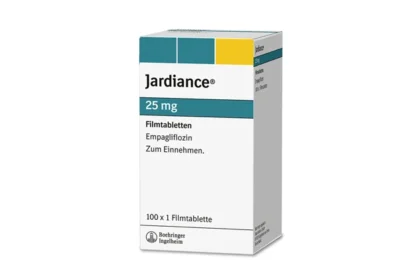Fine-tuning pre-trained models has become a critical technique in machine learning. It helps adapt large language models (LLMs) to domain-specific tasks. However, optimizing these models requires more than just training on task-specific data.
A key factor here is hyperparameter optimization. ML engineers can significantly enhance model performance while maintaining efficiency by adjusting specific hyperparameters.
Let’s explore the role of hyperparameter optimization in fine-tuning. We’ll cover the fundamental techniques, best practices, and challenges.
What is Hyperparameter Optimization?
Before diving into LLM fine tuning, you should first understand what is LLM and the difference between hyperparameters and model parameters.
In the context of machine learning, LLM refers to large language models that leverage vast amounts of data and sophisticated algorithms to understand and generate human-like text.
While model parameters (like weights) are learned during training, hyperparameters are predefined values that govern the training process. They influence the model’s learning process, its convergence speed, and its ability to generalize to new data.
The Primary Hyperparameters in LLM Fine-Tuning
- Learning Rate: The speed at which the model adjusts its weights during training. A low learning rate results in slow learning. If the learning rate is too high, the model might shoot past the minima, which can result in poor performance.
- Batch Size: The quantity of training examples utilized in a single forward and backward pass. Larger batches offer stable updates but require more memory. Smaller batches can be noisy but require less computation.
- Epochs: The amount of times the entire training dataset passes through the model. Overfitting can occur when epochs are increased, while underfitting may result from too few epochs.
- Regularization: Use techniques like Dropout and L2 regularization to prevent overfitting. They penalize large weights or drop out random neurons during training.
- Optimizer: Algorithms like Adam and Stochastic Gradient Descent (SGD) are responsible for updating model parameters. Each optimizer has its own set of hyperparameters.
Top Techniques for Hyperparameter Optimization
Hyperparameter optimization can be approached using several techniques, each with its strengths and limitations. Let’s look at some common methods and their applicability to LLM fine tuning.
1. Grid Search
Grid search exhaustively tests all possible combinations of hyperparameters. While it’s comprehensive, it becomes computationally expensive when the search space is large. The latter is often the case with LLMs.
Advantages:
- Thorough exploration of hyperparameter space.
- Can work well for smaller models.
Disadvantages:
- Computationally expensive.
- Time-consuming, especially for large LLMs.
2. Random Search
The random search method samples hyperparameter combinations within a specified search space in a random manner. It often outperforms grid search, especially when only a few hyperparameters significantly impact the model.
Advantages:
- Faster than grid search.
- Efficient for large parameter spaces.
Disadvantages:
- It may miss optimal combinations, especially for sensitive parameters like the learning rate.
3. Bayesian Optimization
Bayesian optimization represents a smarter approach. It constructs a probabilistic model of the objective function and employs it to determine the next evaluation. This technique is more efficient than random or grid search but still resource-intensive.
Advantages:
- Smarter exploration of hyperparameter space.
- Can identify optimal settings faster than random or grid search.
Disadvantages:
- Requires computational overhead.
- More complex to implement.
4. Population-Based Training (PBT)
PBT dynamically adjusts hyperparameters during training by using a population of models. Here, you fine tune LLM with different hyperparameters, and successful configurations are propagated through the population. This technique works well with distributed systems, making it suitable for large language models.
Advantages:
- Real-time adjustment of hyperparameters during training.
- Efficient for large-scale models.
Disadvantages:
- Requires significant computational resources.
- Complex implementation.
Key Hyperparameters in Fine-Tuning LLMs
While the hyperparameters mentioned above are crucial, fine-tuning large language models like GPT-4 presents unique challenges. The large parameter space and model size introduce additional considerations that must be carefully optimized.
Learning Rate and Layer-Wise Fine-Tuning
In large models, a single learning rate may not suffice. Instead, you can implement layer-wise learning rate decay. Here, lower layers (closer to the input) receive a smaller learning rate, and higher layers (closer to the output) receive a larger one. This method allows models to retain general knowledge while fine-tuning on specific tasks.
Mixed Precision Training
Given the computational cost of fine-tuning large models, mixed precision training—which uses lower precision (FP16) for some operations—can help reduce memory requirements while maintaining performance. This allows for faster training without sacrificing too much accuracy.
Impact of Hyperparameter Optimization on Fine-Tuning Performance
Optimized hyperparameters can lead to significant improvements in model performance. For instance, fine-tuning an LLM for a text classification task can result in better generalization with optimized learning rates and batch sizes. Here’s an example:
| Hyperparameter | Model A (Default Settings) | Model B (Optimized) |
| Learning Rate | 0.001 | 0.0005 |
| Batch Size | 64 | 32 |
| Accuracy | 85% | 90% |
As shown, small adjustments to hyperparameters can result in notable accuracy gains.
Ultimately, these efforts contribute to the broader field of natural language processing, enhancing the capabilities and applications of LLMs in various domains.
Common Challenges in Hyperparameter Optimization
While the benefits of hyperparameter optimization are clear, there are also some challenges to deal with. Especially in the context of large-scale LLMs:
- Computational Costs: Fine-tuning large models is resource-intensive. So, running multiple hyperparameter experiments can strain hardware and cloud budgets.
- Time-Consuming Experiments: Each experiment can take hours or even days, especially when working with large datasets and models.
- Overfitting: Fine-tuning introduces the risk of overfitting if not monitored carefully. Adjusting hyperparameters like dropout and regularization techniques is essential to prevent this.
Best Practices to Overcome These Challenges
- Use Smaller Models for Preliminary Tuning: Before fine-tuning large models, test hyperparameter settings on smaller models to save time and resources.
- Leverage Automated Hyperparameter Tuning Tools: Tools like Optuna and Ray Tune can automate the tuning process, dynamically adjusting hyperparameters during training to reduce the overall burden.
- Monitor Performance Metrics: Continuously track key metrics such as validation loss, perplexity, and F1 score to ensure the model improves during fine-tuning.
Summing Up
Hyperparameter optimization plays a crucial role in LLM fine tuning, allowing ML engineers to effectively tailor models for specific tasks. Techniques like random search, Bayesian optimization, and population-based training can help discover the best settings while balancing computational resources.
As large language models grow in size and complexity, automating hyperparameter optimization will ensure that models remain efficient, accurate, and scalable. Here, fine-tuning LLMs requires expertise, the right tools, and techniques to optimize performance without overspending on resources.










